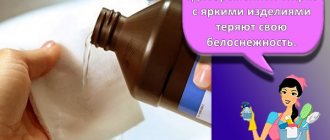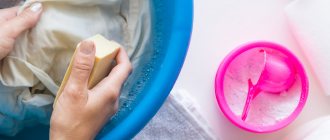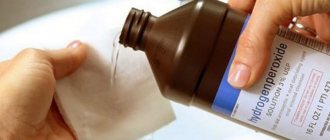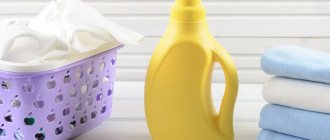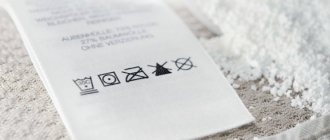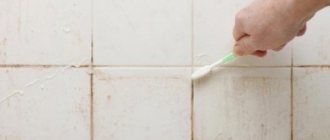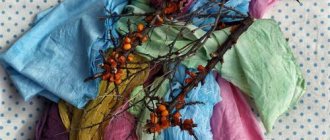Marble, lily, sugar: I love the different shades of white! It's so nice to wear snow-white things. But just as snow melts in spring and loses its splendor, so white things turn yellow and gray over time...
We will tell you how to bleach linen at home , even the thinnest and most delicate fabrics, even fragile lace, without damaging them. But what's even better is that these methods can be used to prevent yellow discoloration! If you wash a brand new white set each time with the addition of one of the listed products, it will remain the same crystal clean for a long time.
Whitening with lemon juice
Lemon juice will help remove grease and sweat stains and refresh the color of your clothes. This product also has a delightful fresh aroma...
YOU WILL NEED
- 250 ml fresh lemon juice
- 2 liters of water
APPLICATION
- Boil water, add lemon juice to it.
- Cool the lemon solution to a temperature suitable for washing delicate fabrics. Soak things for 2 hours in it.
- After 2 hours, remove the items from the solution and treat the problem areas with lemon juice again. Machine wash the item as usual using powder.
Important Tips
- One of the best options for bleaching guipure tulle is the salt method. Initial soaking in a thick solution allows you to “push out” all the dirt .
- If your washing machine has a delicate wash function, it can be used. Only the guipure item must be placed in a special bag .
- When using aggressive agents - ammonia, bleach, other chemicals - be sure to wear gloves. The fabricator recommends using white or clear polyethylene gloves .
- The compositions should be mixed with extreme caution. And only lower the item to be bleached into the final solution.
- It is recommended to rinse after the procedure in several waters - warm and cold.
- Metal inserts in guipure clothing (for example, underwires or clasps on a bra) can significantly complicate the procedure. In this case, you can soak the laundry, but only for 10 minutes.
- It is recommended to wash and bleach in lukewarm water with a temperature of no more than 35 degrees . Hot heat deforms delicate fabric.
- You can dry bleached clothes only naturally, never on a radiator. Otherwise, yellowness will appear again. The tulle can be hung on the cornice immediately after washing.
- Grandmothers also use milk as a folk remedy. Soak the delicate fabric for several hours and then rinse as usual.
- You can use both liquid laundry detergent and granules. The latter must be thoroughly dissolved so that no lumps remain.
Which palazzo pants are fashionable in 2022 and how to wear them
History of topless fashion: who undressed first and for what?
Salt bleaching
Salt will help whiten collars, cuffs, and also deal with stubborn stains.
YOU WILL NEED
- 1 tbsp. l. table salt
- juice of half a lemon
APPLICATION
- Mix salt and lemon juice to form a paste.
- Apply the product to problem areas.
- Leave the item for 30 minutes, then wash it as usual.
Special bleaches
The modern chemical industry offers consumers various product options for all types of fabrics. Yellowness or grayness from lace is removed with oxygen bleaches. Products for delicate fabrics and underwear “Frau Schmidt” and “Vanish” have proven themselves well. Bleach is diluted in water according to the instructions on the package and the products are soaked in it for 2-3 hours. The linen is then washed by hand.
Whitening with white vinegar
Vinegar will not only defeat stains, but also disinfect the fabric, ridding the clothes of any odors. White sting is a powerful water softener.
YOU WILL NEED
- 250 ml white vinegar
- 2 liters of hot water
APPLICATION
- Dilute vinegar with hot water. Leave things in the solution for 8 hours.
- Wash your clothes as usual, you can add half a glass of vinegar to the conditioner compartment during washing: this will soften the water and help achieve an even better effect.
How to bleach delicate and lacy white items: 5 effective ways
Life hack: White things turn yellow and gray over time. I will tell you 5 ways to whiten linen at home, even the thinnest and most delicate fabrics, even fragile lace, without damaging them.
Marble, lily, sugar: I love the different shades of white! It's so nice to wear snow-white things.
But just as snow melts in spring and loses its splendor, so white things turn yellow and gray over time... How to bleach linen at home, thin and delicate fabrics, white fragile lace, without damaging them?
There are methods that can also be used to prevent yellow discoloration!
If you wash a brand new white set each time with the addition of one of the listed products, it will remain the same crystal clean for a long time.
All the methods described are gentle! You don’t have to worry about insanely expensive lace lingerie; it will remain safe and sound. But the spots and yellowness will disappear like a bad dream!
HOW TO WHITEN LINEN:
- Whitening with lemon juice
- Lemon juice will help remove grease and sweat stains and refresh the color of your clothes. In addition, it has a delightful aroma of freshness.
Ingredients:
- 250 ml fresh lemon juice 2 liters water
Application:
Boil water, add lemon juice to it.
Cool the lemon solution to a temperature suitable for washing delicate fabrics. Soak things in it for 2 hours.
After 2 hours, remove the items from the solution and once again treat the problem areas with lemon juice. Wash the item as usual. Salt bleaching
Salt will help whiten collars, cuffs, and also deal with stubborn stains.
Ingredients:
- 1 tbsp. l. table salt
- juice of half a lemon
Application
- Mix salt and lemon juice to form a paste.
- Apply the product to problem areas.
- Leave the item for 30 minutes, then wash it as usual.
Whitening with white vinegar
Vinegar will not only defeat stains, but also disinfect the fabric, ridding the clothes of any odors. White sting is a powerful water softener.
Ingredients:
- 250 ml white vinegar
- 2 liters of hot water
Application:
- Dilute the vinegar with hot water. Leave things in the solution for 8 hours.
- Wash your clothes as usual, you can add half a glass of vinegar to the softener compartment during washing: this will soften the water and help achieve an even better effect
Bleaching with boric acid
Boric acid is easy to find at a pharmacy or gardening store. Penetrating deeply into the fabric, borax will not leave a chance even for very old and hopeless stains.
Ingredients:
- 50 g boric acid powder
- 3 liters of water
Application:
- Dissolve boric acid in water according to the indicated proportions. Soak things for 3 hours in this solution.
- Wash your clothes as normal. Whitening with orange and lemon zest
Aromatherapy and whitening!
Ingredients:
- zest of 5 lemons, oranges and tangerines
- 2 liters of water
- 2 tbsp. l. hydrogen peroxide
Application:
- Place citrus zest in water and boil.
- Strain the broth through a strainer, add hydrogen peroxide.
- Soak items in citrus water for 2 hours, then wash as usual.
Bleaching with boric acid
Boric acid is easy to find at a pharmacy or gardening store. Penetrating deeply into the fabric, borax will not leave a chance even for very old stains, hopeless, doomed...
YOU WILL NEED
- 50 g boric acid powder
- 3 liters of water
APPLICATION
- Dissolve boric acid in water according to the indicated proportions. Soak things for 3 hours in this solution.
- Wash your clothes as usual.
What remedies will help?
Of course, household chemicals are considered a lifesaver in this case. It's easy to use. Most often - soak, wait, wash. Effective and inexpensive are regular whites, as well as whitening products from Heitmann, Frau Schmidt, ACE, Tide, Amway, Vanish, BOS maximum and others. Given the general dislike of chemistry, a good housewife’s priority is always the so-called folk remedies, that is, those that are at hand.
Delicate materials can be bleached using peroxide, ammonia, soda, vinegar, citrus fruits, salt, soap ... The range of products is huge, and, most importantly, they are always available in the kitchen. And now first things first.
@thescottishsun.co.uk
Remember
I told you how to bleach a shirt. To make the process easy and simple, I’ll give you a few more tips:
- Sort things. Wash only white with white, colored with colored, otherwise things will fade.
- Do not use bleach frequently. Frequent use of aggressive agents will damage the tissue. Wash with it only as needed.
- Boil with laundry soap. Boil the laundry with soap over a fire - it will turn white. You can also add a little washing powder to eliminate the smell of laundry soap.
- Soak with hydrogen peroxide. This is a non-aggressive remedy. Suitable even for delicate fabrics.
- Use ammonia. It perfectly removes even old stains on white clothes.
- See label directions. Some fabrics require delicate care, so boiling or chlorine should not be used.
If you have any questions, ask them in the comments. And don't forget to watch the video in this article
Whitening laundry with folk remedies
Traditional methods will help you bleach lace underwear at home. The most popular are the following:
Hydroperite or hydrogen peroxide
Vegetable oil (is a good organic solvent)
If you don’t have time to boil or you need to bleach a synthetic or silk product, you should do it differently: pour the solution over the lace underwear, leave for a day, then remove and rinse
Recipe No. 1: add a crushed aspirin tablet to the powder, then wash it in the machine.
You can whiten your underwear quickly and effortlessly using industrial bleaches. It is better to buy oxygen products: they do not contain chlorine, which means they do not destroy the fibers of delicate materials. Such bleaches can be used in machine washing, which is a definite plus for modern housewives. But oxygen bleaches also have a disadvantage - price.
Well, what if you urgently need to remove old yellow stains from your bra, but you don’t have bleach on hand? Or the grayness remains after the store-bought product. Try traditional time-tested methods of whitening.
How to wash without pilling
Getting rid of pellets, as well as preventing them, is not an easy task, but it is doable. To prevent pilling from forming on your clothes, follow a few simple steps:
- Before throwing clothes in the washing machine, turn them inside out. This is due to the fact that the drum rubs less with the inside of the item.
- Do not use abrasive detergents. Only liquid substances for delicate processing. If it is a powder, then let it completely dissolve before pouring it into the machine.
- Set only delicate modes with a short wash cycle - clothes will not hang around for a long time and rub against the walls.
- Dry clothes preferably in the fresh air. As soon as the clothes are dry, take them off.
- There is a choice: manually or by machine - choose the first option.
Laundry detergents
Boiling
Only cotton and linen lace can be treated with high temperature.
To bleach a product at home, proceed according to the following scheme:
- Boil lace underwear in an enamel pan without chipping. Copper or iron containers are prohibited.
- Before boiling, place a clean white rag on the bottom, pre-soaked with detergent or bleach. You can use Whiteness at home by mixing 3 liters of water with 1 tbsp. l. bleach.
- For effectiveness, add a little ammonia.
- To bleach very soiled laundry, it must first be soaked.
- Treat dirty areas with laundry soap or powder.
- Place the lace items in a pan and only then put it on the fire. If you throw things into already boiling water, you can achieve the opposite effect: the dirt will remain forever.
- Place the pan on the fire.
- When the solution boils, reduce the heat.
- Boil the lace underwear for about an hour, stirring occasionally. If Whiteness is used, keep lace items on the fire for no more than 15 minutes.
- Turn off the gas, remove the items from the pan, wash by hand or in a washing machine.
Useful tips
White things quickly lose their appeal. You have to look for the answer to the question of how to bleach white linen, re-reading a lot of tips and recommendations. To face this problem as late as possible, you should wear your underwear correctly.
Necessary:
- wear white underwear sets only with light-colored clothes;
- wash correctly, following the recommendations on the product label;
- do not wash white items together with colored ones;
- adhere to the recommended washing temperature – 30-40 degrees;
- do not allow dirty laundry to “stay”;
- do not put underwear in the closet if it is not dry enough;
- dry white items away from heating appliances;
- do not put on a bra until the deodorant has dried;
- do not sleep in a bra;
- When washing, use powders intended for white items.
Features of bleaching blouses made of different fabrics
The stores offer clothes made from different materials. Each variety requires careful, proper care. When choosing a cleaning method, you should carefully study the labels on the blouse to find out the composition of the fabric.
How to bleach things depending on the material:
- natural fabrics (cotton, linen) are not afraid of exposure to chlorine-containing drugs and can withstand boiling;
- synthetic acrylic, polyester, lycra and other materials can be bleached using oxygen compounds. The maximum temperature for washing a blouse is 40 degrees;
- silk quickly returns to its original appearance from the effects of optical and oxygen stain removers. Not suitable for boiling;
- yellow stains from blouses made of modal, viscose, bamboo, acetate silk can be bleached with oxygen solutions. Exposing such items to high temperatures is strictly prohibited.
An alternative to ready-made drugs are folk recipes. They are able to delicately clean the fabric without destroying the structure. Cheap products and pharmaceuticals are used for preparation.
How to remove sweat stains?
Yellow marks in the armpits often appear when using antiperspirant. Sweat and deodorant mix to form permanent stains. Not only do they look unsightly, but they also emit an unpleasant odor.
Fortunately, stains are easy to remove. Fresh dirt is especially easy to remove. You just need to soap them well with laundry soap and leave for 5-10 minutes. After this, you can throw the laundry into the washing machine or wash it by hand as usual.
You can use the following recipes:
- 1 glass of water, 1 tbsp. spoon of salt. Dissolve salt in warm water. Dampen a cloth and rub the stain. Wait 15 minutes.
- 2 tbsp. spoons of lemon juice, 3 tbsp. spoons of water. Prepare the solution. Soak stains. Leave the bra on for 1 hour.
- 1 teaspoon of dishwashing detergent. Moisten the sweat stain with water. Rub dish detergent into the fabric. Wait 10 minutes.
After removing the stains, wash the bra as usual. Aspirin, vinegar and ammonia with salt are also good for removing sweat.
Potassium permangantsovka
Strange as it may sound, you can also bleach guipure with potassium permanganate. Please note that the solution should have a slightly pinkish tint, so add powder in a very small amount. A few manganese crystals (a few crystals are enough) and 100 grams of washing powder per 10 liters of hot water.
Mix all the ingredients in a container, dip the laundry in it and cover with plastic wrap. Wait until the water cools down. Then remove, dry and iron.
Wash with professional products
More and more different powders and bleaches are appearing on the market. But I will describe those that coped with the task:
Bleach "Frau Schmidt"
Bleach “Frau Schmidt”
What the manufacturer promises:
- restores whiteness;
- effective already at 30 °C;
- safe for any fabric, so you can bleach chiffon.
Volume: 10 tablets.
Price: about 250 ₽.
How to use:
for hand washing:
- dissolve 1 tablet in 5 liters of water;
- soak things in liquid;
- leave for about an hour;
- rinse under running water.
for machine wash:
- put 1 tablet in the drum;
- load 3 kg of laundry;
- wash as usual.
Review:
Lightnight:
Whitens perfectly. My husband had a shirt that turned yellow after three wears in the summer. Probably poor quality material, because this is the first time I have encountered such a rate of yellowing. But after washing with Frau Schmidt tablets, it became several shades lighter - the yellowness was gone, maybe not completely, because really new and snow-white shirts are still whiter than this one washed with bleach, but the result was very visible.
Source otzovik.com
Bleach "ACE"
Bleach “ACE”
What the manufacturer promises:
- returns the natural white color to grayed items;
- effectively removes stubborn stains, even if a white shirt is dyed.
Volume: 1 l.
Price: about 100 ₽.
How to use:
for hand washing:
- dissolve 100 ml of “Ace” in 15 liters of cold water;
- soak the laundry for 10 minutes;
- rinse the laundry in cold water;
- replace used water;
- wash in the usual way with the addition of powder.
for machine wash:
- load laundry into the drum;
- add washing powder;
- select a pre-wash program;
- add 100 ml “Ace”.
Review:
avita6:
I soaked it in a basin for about ten minutes in cold water with ACE, using approximate proportions. Then I put the laundry into the washing machine and selected the normal cycle. After washing, the smell of bleach is, of course, noticeable, but the result is obvious. But, compared to Whiteness, this smell is much weaker and disappears faster. When the laundry dries, I no longer feel it at all.
Source otzovik.com
Is it possible to dye guipure?
It is very easy to color guipure, since it is made of natural fibers and actively absorbs the dye, so you should apply the paint carefully. You can color the openwork material completely, there is nothing complicated about it.
Interesting materials:
How much ginger per liter of water? How many immigrants are there in Germany? How much iodine? How many Spaniards are there in the world? How much cottage cheese is produced from one liter of milk? How many calories does cardio burn? How many calories are burned when riding an exercise bike? How many calories are burned in 1 Burpee? How many calories are burned in an hour of walking? How many calories are burned in 10,000 steps?
The occurrence and causes of yellowing of wedding flowers
It's been 10 years since your wedding. One day, your 8 year old daughter asks questions about that big day. You fall into a sea of memories: you open the wedding album, look at each one. Oh my God! Here it is - a photo of you in your wedding attire. And you remember that it is stored deep in your closet.
Your daughter is looking forward to seeing this beauty in reality. You take out your precious 10 year old memory and notice that it looks a little different. Want to convince yourself that it's due to poor lighting. Take it out into the daylight and... You panic! Your once sparkling white wedding clothes have yellowed over time and turned into a dull clump of fabric.
A familiar scenario, isn't it? Every bride faces it. And questions arise: “Why did the dress turn yellow? How did this happen? What can be done about this? Let's discuss the answers to all these questions!
Why does a white outfit change color?
The simple answer to this common question is that yellowing of wedding clothing is an unexpected breakdown of the chemical composition of the original fibers that make up the fabric. These fibers change color over time, becoming yellow.
The reason is that current ones contain more synthetic fibers than ever before.
How does this happen
There are some possible factors that lead to the initial breakdown of the bridal fibers.
- Fiber disintegration. The breakdown of fibers in your clothing may be accelerated by exposure to the environment. This may be due to sunlight, high humidity or excessive heat. These factors negatively affect the mantle during long-term storage.
- Chemical additives. The cause of yellowing is the chemicals that are added during the manufacturing process of the wedding fabric. Often these are textile chemicals: chlorine, oils, animal fats, waxes, etc. They may degrade due to improper chemical combination and long-term storage. In addition, these chemicals during a busy wedding can attract contaminants such as dirt, dust, oils to the dress, which accelerate the yellowing process.
- Pollutants in the atmosphere. Atmospheric pollutants, especially nitrogen, can be one of the most potent causes of yellowing of fabric. These oxides come from automobile exhaust, home heating systems, and various industrial processes. It is important to note that yellowing from air pollutants usually occurs only at the surface of the mantle.
- Transportable contaminants. These are the ones that are transferred to the fabric both before and after purchasing the dress. Remember, polyethylene (plastic) bags cause phenolic yellowing of the material! Phenolic yellowing can also be caused by cardboard, paper and other packaging materials. For this reason, an acid-free wipe is used in the outfit packaging.
- Consumer pollutants. Remember your wedding day! Throughout the day, your wedding dress is bombarded with pollutants that stick or are absorbed into the fabric of your outfit. These are stains from body lotion, traces of grass or soil during washing, stains from wine, cake, perfume, sweat. These are the memories that will last forever and remain in your hearts. But you don’t need to save them on your wedding clothes! Before storing it, clean all stains!
What can you do about it?
It would be great if there was a standard method for bleaching a yellowed dress. But there are different types of fabrics, which makes the cleansing process difficult as it can cause more harm than good. If you decide to go through the painstaking process yourself, then these notes are for you:
- Bleach is a killer for fabrics like silk. In addition to not removing stains very well, bleach can cause permanent damage to sequined, beaded, and rhinestone outfits and dissolve the embellishments on them.
- Soak. Most fabric experts recommend soaking the mantle in warm water rather than brushing the fibers. Soaking allows you to gently remove stains without damaging or wearing out the fabric.
- Determine your fabric type. The main question here is silk or not silk. Wedding dresses made of lace, guipure, can be cleaned with bleach or stain remover. If your wedding is just yellowed and doesn't have deep brown to black stains, you can bleach it yourself. Silk is a completely different story. You cannot bleach a silk robe yourself. It is better to entrust this matter to professional dry cleaners in St. Petersburg.
- Be careful with the iron. A light steam iron is enough to straighten stubborn wrinkles in your skirt.
Ammonia and hydrogen peroxide
This is the most common method and proves that effective countermeasures do not always have to be expensive. Most of them don’t even have to leave the apartment, because all the necessary “ingredients” are in the home medicine cabinet.
Dilute 1 tablespoon of ammonia and 2 tablespoons of peroxide (3%) in 2 liters of warm water. Dip the product into the resulting solution and then leave for 1-1.5 hours. Then do several rinses in cool water.
Drying
If you approach drying incorrectly, deformation will quickly disappear. Before drying, pay attention to the final stage - squeezing and hard twisting are prohibited. Otherwise, even proper drying will not help.
If after washing there is a lot of moisture left on the product, get rid of it with a terry towel. It is laid on a flat surface, with fabric on top. Everything is carefully rolled into a roll and pressed a little. Repeat this procedure several times, changing wet towels.
Drying clothes outside
Mandatory conditions for high-quality drying:
- Dry items only in a horizontal position.
- Direct sunlight does not fall on the item, the room is well ventilated.
- Do not use electrical appliances or heating equipment for drying.
- Clothes dry on hangers.
Basic rules for bleaching depending on the fabric
We all know that you can't wash black and white together. They care for wool with silk and cotton differently. Applying the same approach to them is unacceptable.
The type of fabric is of decisive importance when bleaching. What bleaches cotton can ruin synthetics forever.
To ensure that you are pleased with the results of bra whitening, we advise you to adhere to the following rules:
- Do not throw away the tag (label) from a new bra. You need to sign it and keep it in a box somewhere. It contains valuable information: the composition of the fabric, at what temperature to wash the product (including removing stains), how to dry it, whether it can be bleached with bleach.
- If possible, use store-bought bleaches with a gentle composition. They behave more predictably than home remedies and rarely damage the fabric.
- Bras made of different fabrics or different colors should be bleached separately.
- Conduct the test in an inconspicuous place. You will spend 15 minutes more time, but you will be sure that the method will work and the bra will remain intact.
- At the end of the procedure, rinse the product thoroughly. Otherwise, allergic skin reactions are possible.
We recommend: How to get blue Easter eggs using red cabbage
Cotton bodice
Cotton is more durable and resistant to aggressive substances. High-quality and dense 100% cotton can be bleached well by boiling, bleach, or bluing. But there is one “but”.
Modern bras are not made from pure cotton. It is combined with synthetics to achieve softness and elasticity of the fabric.
Therefore, it is better to leave aggressive means as a last resort. First, try to return the white color with laundry soap, soda and salt, peroxide or commercial bleach (oxygen, optical).
Silk bodice
It is better not to experiment with an expensive natural silk bra. Use oxygen-containing bleaches. As a last resort, try bleaching a silk bodice with vinegar.
Synthetic bra
A synthetic bra is very easy to ruin - just wash it in hot water or use bleach. It is recommended to bleach synthetic bras with oxygen and optical brighteners. Folk remedies you can use are peroxide, ammonia, salt and soda, laundry soap, vinegar, boric acid, and Aspirin.
How to bleach a guipure bra?
Guipure is made from synthetics. Accordingly, the same bleaching agents are suitable for guipure bras (see above). But there is one caveat: the products should not be rubbed, especially with brushes. The lace may fray.
With filler
Gel inserts and foam filling in the bra can lose their elasticity from exposure to aggressive bleaches and hot water. Even if the bra is cotton, you need to bleach it with something gentle: oxygen-containing stain remover, peroxide, boric acid, soda and salt, vinegar.
Machine washable features
Modern washing machines can wash things very carefully and much more efficiently than a person. In order for the bodice to be washed well without being damaged, you need to use delicate modes.
It is very convenient to bleach your bra in the washing machine. You need to add oxygen bleach to the powder compartment.
Features of machine washable bras:
- Using a case (container, bag) for washing. This useful device maintains the shape of the bodice and prevents the bones from falling out.
- Selecting the “Delicate”, “Hand Wash” modes. It is characterized by slow drum rotation, no or minimal spin, and low water heating temperature.
- "Double rinse" It is important to completely wash away any remaining detergent from your bra. Otherwise, it may begin to turn gray and cause itching and irritation on the skin during wear.
- Fastening your bra before washing. The hooks must be fastened. If this is not done, they may cling to the fabric and leave holes.
